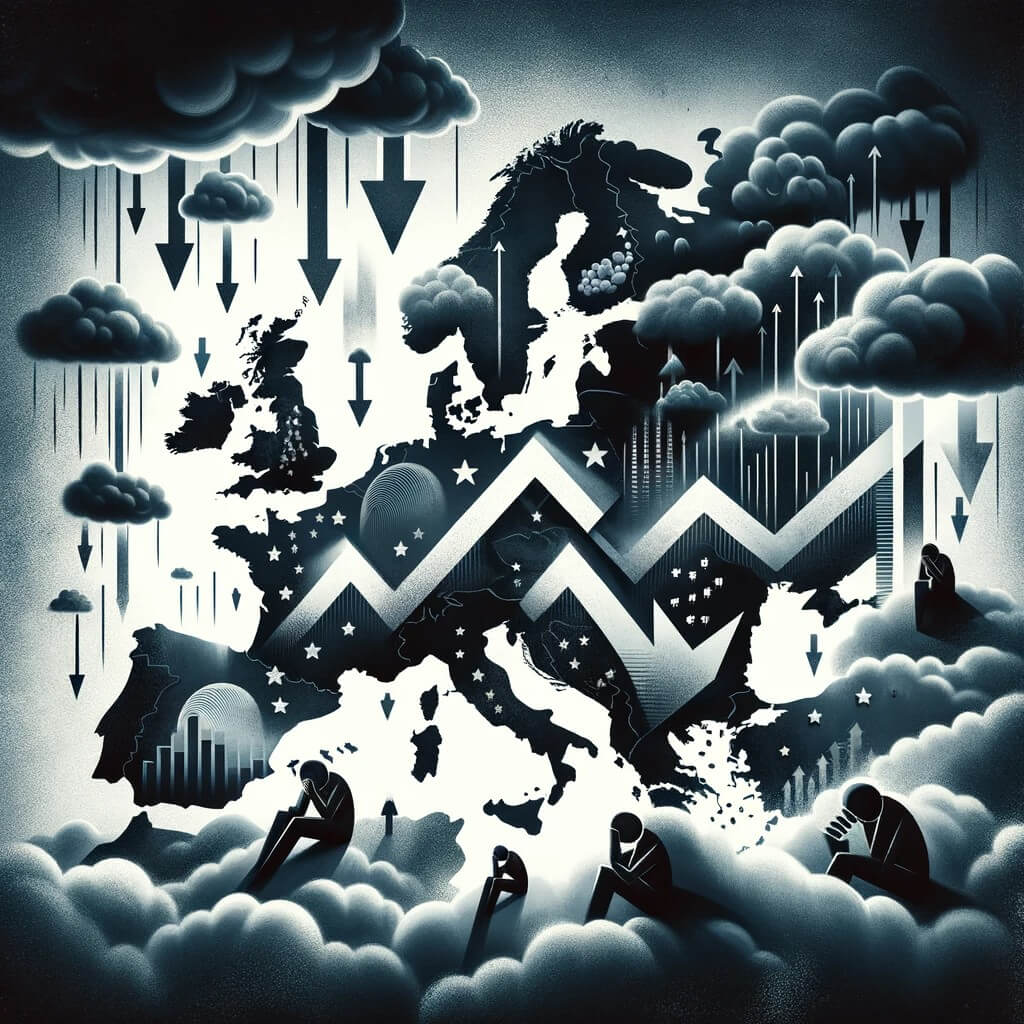Amidst the bustling financial markets and the ever-shifting global economic landscape, a cloud of concern is looming over Europe. The specter of recession is not just a whisper in the corridors of power but a growing roar in the streets and boardrooms across the continent. Europe, with its rich history and complex economies, now faces a daunting challenge as recession fears grip the region, contrasting sharply with the growing optimism of a ‘soft landing’ in the United States.
While the U.S. treads a path towards economic stabilization, Europe’s journey appears more tumultuous. The stark reality is reflected in the yields of the continent’s riskiest corporate bonds, which now average an eye-watering 19.66 percent, according to an Ice BofA index. This figure is not just a number; it’s a siren call, indicating a spread of over 18 percentage points above government debt issuers. In stark contrast, the U.S.’s lowest-rated corporate bonds sit more comfortably at an average yield of 13.47 percent, revealing a much narrower spread of less than nine percentage points.
The Widening Gulf in Financial Health
This significant disparity in credit spreads between Europe and the U.S. underscores a tale of two economies. Europe’s financial health, or rather the lack thereof, is starkly evident when compared to its transatlantic counterpart. Investment experts and economists point to this widening gulf as a clear indicator of shaky ground.
Apollo’s chief economist, Torsten Sløk, succinctly puts it, “Europe is looking far weaker than the U.S.” This sentiment is echoed by Mike Scott, head of global high-yield at Man Group GLG, who suggests that Europe is teetering on the brink of recession, if not already engulfed by it.
In contrast to the Federal Reserve’s moves towards cooling the U.S. economy without triggering a sharp downturn, Europe’s narrative is more complex and less optimistic. The ECB continues its hawkish stance on interest rates, resisting the push towards easing borrowing costs. This approach has fostered a sense of impending economic hardship, raising the specter of a ‘hard landing’ in Europe.
Unraveling the Threads of Europe’s Economic Uncertainty
The narrative is further complicated by the behavior of specific market segments. While broader junk bond indices in both regions have shown more alignment, the story is markedly different in the realm of triple-C rated bonds. Here, the U.S. has witnessed a tightening of spreads, whereas Europe has seen only a marginal narrowing, underscoring the region’s struggle with recessionary forces.
Markets are also grappling with the unique challenges posed by a smaller and more volatile triple-C index. This segment, influenced heavily by a few key players like the telecom giant Altice, German cable company Tele Columbus, and TUI Cruises, presents a different picture compared to the more diversified U.S. index. As Muzinich’s co-head of public markets, Tatjana Greil-Castro points out, understanding the intricacies of these individual players is crucial in navigating the high-yield market in Europe.
In essence, the European economy’s current state is a complex tapestry woven with threads of uncertainty, caution, and a pressing need for stability. As the gap in credit spreads between Europe and the U.S. widens, it serves as a stark reminder of the diverging paths these economies are taking. The fear of recession in Europe, juxtaposed with a more confident outlook in the U.S., is not just a matter of financial statistics; it’s a reflection of the underlying economic resilience or vulnerability of these regions.
In essence, as Europe navigates these choppy economic waters, the road ahead seems fraught with challenges. The region’s ability to weather this storm will not only shape its economic future but will also have far-reaching implications for the global economy. In this high-stakes economic drama, the world watches and waits, hoping for a resurgence of stability and growth in a region that has long been a cornerstone of the global economic order.





